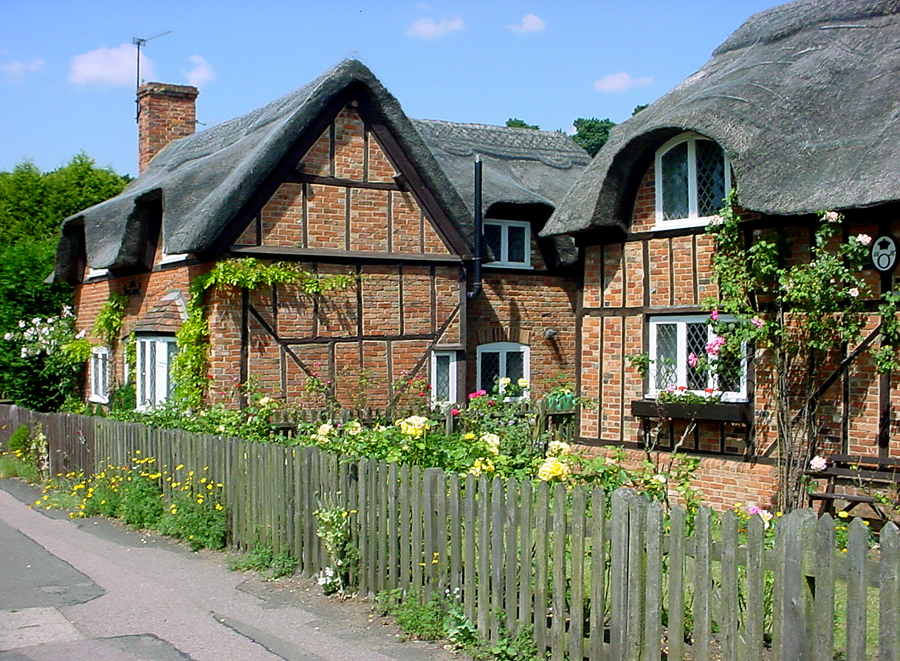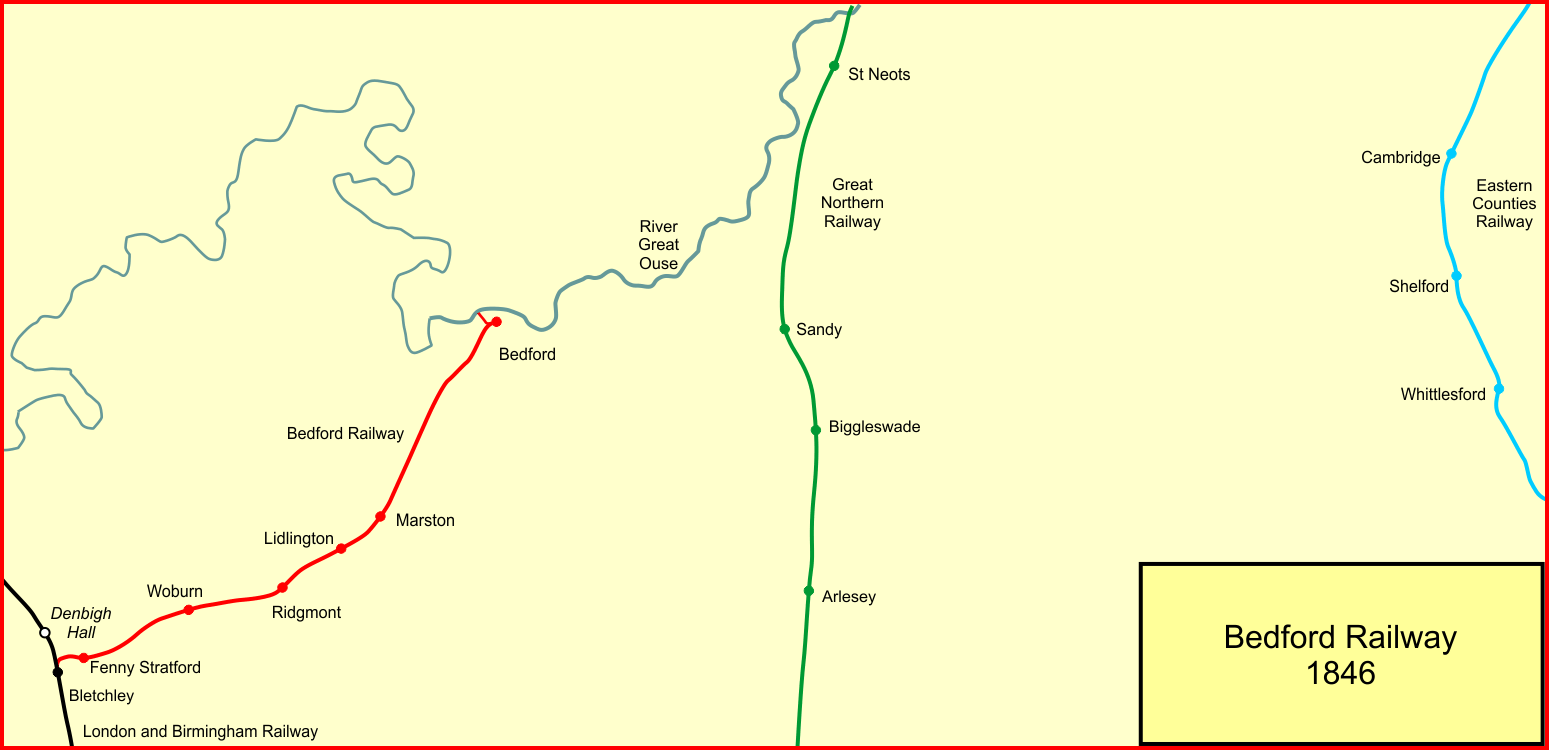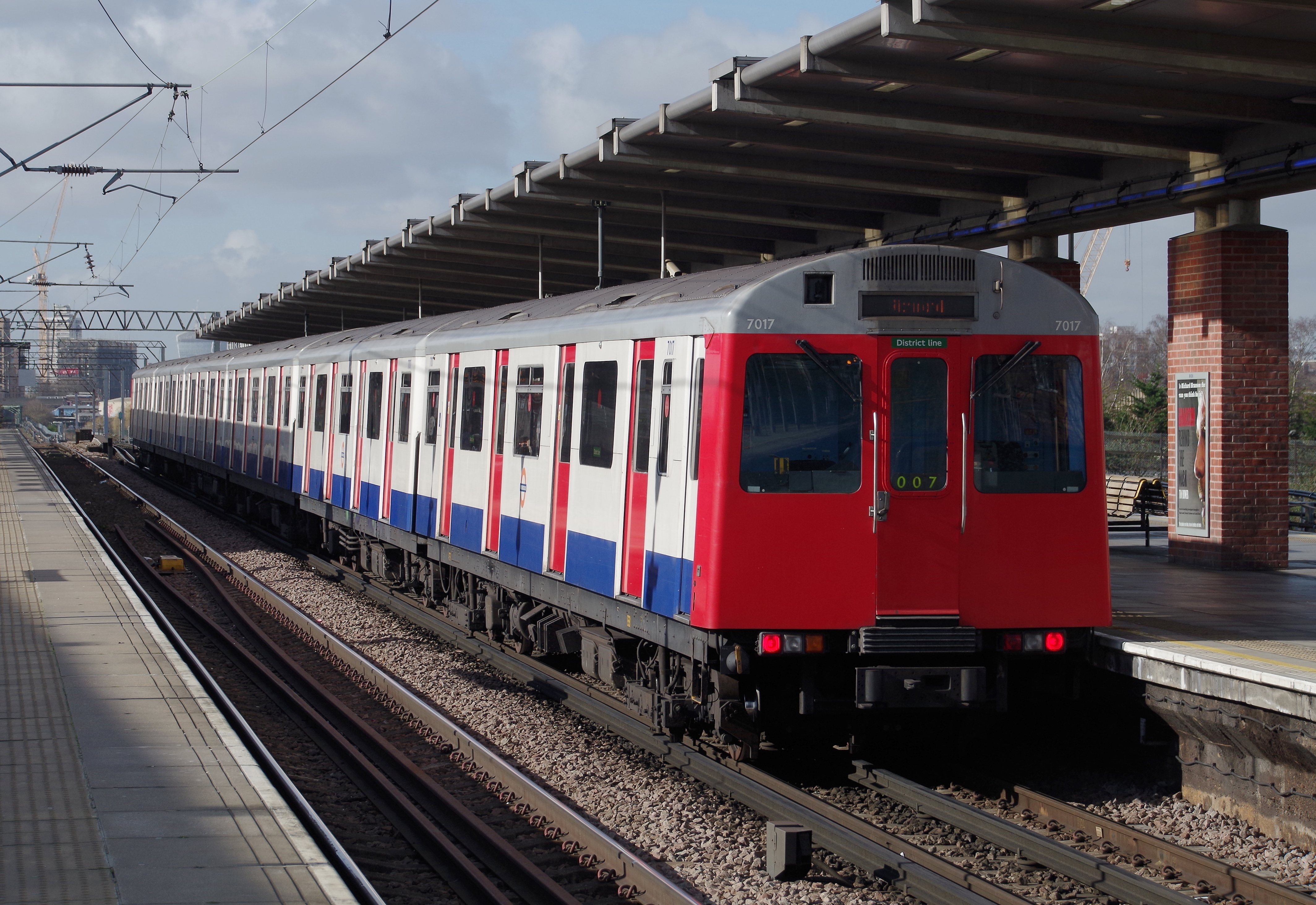|
Millbrook Railway Station (Bedfordshire)
Millbrook railway station serves the villages of Millbrook and Marston Moretaine in Bedfordshire, England. It is on the Marston Vale Line, between Stewartby and Lidlington. Millbrook is also the principal stop for the Marston Vale Millennium Country Park. History First opened in 1846 by the Bedford Railway, the station was originally named "Marston", but changed to "Ampthill (Marston)" in 1850 after the nearby village. The opening of a second and more conveniently-sited Ampthill station by the Midland Railway in 1868 on its Midland Main Line gave rise to confusion which was only resolved in 1877 when the original Ampthill station was renamed "Millbrook for Ampthill". The station is the fourth and final on the Marston Vale Line to be built in a half-timbered Gothic Revival style that had been insisted upon by the 7th Duke of Bedford for stations situated in the vicinity of the Woburn Estate. The two station platforms are east of a level crossing. The station developed su ... [...More Info...] [...Related Items...] OR: [Wikipedia] [Google] [Baidu] |
Ampthill
Ampthill () is a town and civil parish in Bedfordshire, England, between Bedford and Luton, with a population estimate of 8,100 (Mid year estimate 2017 from the ONS). It is administered bAmpthill Town Council The ward of Ampthill which also includes Maulden and Clophill has an estimated population of 13,280 and is administered by Central Bedfordshire Council. History The name 'Ampthill' is of Anglo-Saxon origin. The first settlement was called 'Aemethyll', which literally means either 'ant-heap' or 'ant infested hill'. In the Domesday Book, Ampthill is referred to as 'Ammetelle', with the landholder in 1086 being Nigel de la Vast. The actual entry reads: ''Ammetelle: Nigel de la Vast from Nigel d'Aubigny.'' A further variation may be 'Hampthull', in 1381. In 1219 King Henry III granted a charter for a weekly market to be held on a Thursday. In 2019 the market celebrated 800 years. Henry VIII was a frequent visitor to Ampthill Castle, and it was there that Catherine of Ara ... [...More Info...] [...Related Items...] OR: [Wikipedia] [Google] [Baidu] |
Millbrook, Bedfordshire
Millbrook is a small village and civil parish near Bedford, England. It has a population of 130, increasing to 147 at the 2011 Census. Millbrook railway station, on the Marston Vale Line, is about from the village. The parish church, dedicated to St Michael and All Angels, is Grade II* listed. The vale adjoining Millbrook is reputed to be the location that inspired the 'Slough of Despond' in John Bunyan's ''The Pilgrim's Progress''. Millbrook is also home to the Millbrook Proving Ground Millbrook Proving Ground is an English vehicle testing centre located at Millbrook, Bedfordshire. One of the largest vehicle testing centres in Europe, it is near to the M1 and Bedford. History Modelled on the Milford Proving Ground operated by ... and The Millbrook Golf Club, formerly Lyshott Heath Golf Club. References External links Villages in Bedfordshire Civil parishes in Bedfordshire Ampthill Central Bedfordshire District {{Bedfordshire-geo-stub ... [...More Info...] [...Related Items...] OR: [Wikipedia] [Google] [Baidu] |
Gothic Revival Architecture
Gothic Revival (also referred to as Victorian Gothic, neo-Gothic, or Gothick) is an architectural movement that began in the late 1740s in England. The movement gained momentum and expanded in the first half of the 19th century, as increasingly serious and learned admirers of the neo-Gothic styles sought to revive medieval Gothic architecture, intending to complement or even supersede the neoclassical styles prevalent at the time. Gothic Revival draws upon features of medieval examples, including decorative patterns, finials, lancet windows, and hood moulds. By the middle of the 19th century, Gothic had become the preeminent architectural style in the Western world, only to fall out of fashion in the 1880s and early 1890s. The Gothic Revival movement's roots are intertwined with philosophical movements associated with Catholicism and a re-awakening of high church or Anglo-Catholic belief concerned by the growth of religious nonconformism. Ultimately, the "Anglo-Catholicism" t ... [...More Info...] [...Related Items...] OR: [Wikipedia] [Google] [Baidu] |
Varsity Line
The Varsity Line (or the Oxford to Cambridge railway line) was the main railway route that once linked the English university cities of Oxford and Cambridge, operated by the London and North Western Railway. During World War II the line was adopted as a strategic route for freight avoiding London, and additional connections were made to nearby lines to improve the utility of the route. Despite that, the route was not greatly used for its intended purpose. After the war, the line was again scheduled to be developed as a strategic route, but that scheme was never fully implemented either. Passenger services were withdrawn from most of the line on 1 January 1968, and only the Bletchley–Bedford section remained open for passenger traffic. In 1987, the section between Oxford and Bicester was reopened, followed in 2015 by a connection to the Chiltern Main Line at Bicester, enabling Chiltern Railways to operate an Oxford to London passenger service. There are funded plans for ... [...More Info...] [...Related Items...] OR: [Wikipedia] [Google] [Baidu] |
British Railways
British Railways (BR), which from 1965 traded as British Rail, was a state-owned company that operated most of the overground rail transport in Great Britain from 1948 to 1997. It was formed from the nationalisation of the Big Four British railway companies, and was privatised in stages between 1994 and 1997. Originally a trading brand of the Railway Executive of the British Transport Commission, it became an independent statutory corporation in January 1963, when it was formally renamed the British Railways Board. The period of nationalisation saw sweeping changes in the railway. A process of dieselisation and electrification took place, and by 1968 steam locomotives had been entirely replaced by diesel and electric traction, except for the Vale of Rheidol Railway (a narrow-gauge tourist line). Passengers replaced freight as the main source of business, and one-third of the network was closed by the Beeching cuts of the 1960s in an effort to reduce rail subsidies. On privatis ... [...More Info...] [...Related Items...] OR: [Wikipedia] [Google] [Baidu] |
British Rail Class 230
The British Rail Class 230 ''D-Train'' is a diesel electric multiple unit or battery EMU built by rolling stock manufacturer Vivarail for the British rail network. The units are converted from old London Underground D78 Stock, originally manufactured in 1980 by Metro-Cammell. The conversion re-uses the D78's aluminium bodyshells with new interiors. It runs on the same bogies but these are rebuilt to as-new standard by Wabtec and fitted with brand new three-phase AC induction motors sourced from Austria. The initial build of three vehicles for London Northwestern Railway replaces the four-rail traction-current system with four diesel gen-sets, driving eight traction motors via purpose built electronic traction control units. In this configuration, every wheel is driven and all are braked by a computer-controlled blended reactive/pneumatic braking system, allowing for optimum braking performance in all weather conditions. The type has been assigned the designation of Class 230 ... [...More Info...] [...Related Items...] OR: [Wikipedia] [Google] [Baidu] |
Millbrook Railway Station (Hampshire)
Millbrook railway station is a small station in the Millbrook area of Southampton, England. It is served mainly by the Salisbury to Romsey stopping service. This service runs once per hour in each direction. It is down the line from . The station is managed by South Western Railway. The platforms face the slow lines only, there are no platforms for the fast lines. Millbrook Freightliner Terminal is located next to the station on the up side. A car terminal and rail access to Southampton's Western Docks can be seen from the down side of the station. In summer 2021, works were undertaken to improve the footbridge that connects the island platform with Millbrook Road West. Services *1 train per hour (tph) to Salisbury via Romsey *1 tph to Romsey via Chandler's Ford Chandler's Ford (originally The Ford and historically Chandlersford) is a largely residential area and civil parish in the Eastleigh (borough), Borough of Eastleigh in Hampshire, England. It has a population ... [...More Info...] [...Related Items...] OR: [Wikipedia] [Google] [Baidu] |
Community Rail
Community rail in Britain is the support of railway lines and stations by local organisations, usually through community rail partnerships (CRPs) comprising railway operators, local councils, and other community organisations, and rail user groups (RUGs). Community railways are managed to fit local circumstances recognising the need to increase revenue, reduce costs, increase community involvement and support social and economic development. The Community Rail Network (CRN), formerly known as the Association of Community Rail Partnerships (ACoRP), supports its fifty or so member CRPs and also offers assistance to voluntary station friends groups that support their local stations through the station adoption scheme. Since 2005 the Department for Transport has formally designated a number of railway lines as community rail schemes in order to recognise the need for different, more appropriate standards than are applied to main line railway routes, and therefore make them more cost ef ... [...More Info...] [...Related Items...] OR: [Wikipedia] [Google] [Baidu] |
Captain Tom Moore
Captain Sir Thomas Moore (30 April 1920 – 2 February 2021), more popularly known as Captain Tom, was a British Army officer and fundraiser who made international headlines in 2020 when he raised money for charity in the run-up to his 100th birthday during the COVID-19 pandemic. He served in India and the Burma campaign during the Second World War, and later became an instructor in armoured warfare. After the war, he worked as managing director of a concrete company and was an avid motorcycle racer. On 6 April 2020, at the age of 99, Moore began to walk 100 lengths of his garden in aid of NHS Charities Together, with the goal of raising £1,000 by his 100th birthday on 30 April. In the 24-day course of his fundraising, he made many media appearances and became a popular household name in the UK, earning a number of accolades and attracting over 1.5 million individual donations. In recognition of his efforts, he received the BBC Sports Personality of the Year Helen Rollaso ... [...More Info...] [...Related Items...] OR: [Wikipedia] [Google] [Baidu] |
Train Station
A train station, railway station, railroad station or depot is a railway facility where trains stop to load or unload passengers, freight or both. It generally consists of at least one platform, one track and a station building providing such ancillary services as ticket sales, waiting rooms and baggage/freight service. If a station is on a single-track line, it often has a passing loop to facilitate traffic movements. Places at which passengers only occasionally board or leave a train, sometimes consisting of a short platform and a waiting shed but sometimes indicated by no more than a sign, are variously referred to as "stops", "flag stops", " halts", or "provisional stopping places". The stations themselves may be at ground level, underground or elevated. Connections may be available to intersecting rail lines or other transport modes such as buses, trams or other rapid transit systems. Terminology In British English, traditional terminology favours ''railway station' ... [...More Info...] [...Related Items...] OR: [Wikipedia] [Google] [Baidu] |
Brickworks
A brickworks, also known as a brick factory, is a factory for the manufacturing of bricks, from clay or shale. Usually a brickworks is located on a clay bedrock (the most common material from which bricks are made), often with a quarry for clay on site. In earlier times bricks were made at brickfields, which would be returned to agricultural use after the clay layer was exhausted. Equipment Most brickworks have some or all of the following: *A kiln, for firing, or 'burning' the bricks. *Drying yard or shed, for drying bricks before firing. *A building or buildings for manufacturing the bricks. *A quarry for clay. *A pugmill or clay preparation plant (see below). Brick making Bricks were originally made by hand, and that practice continues in developing countries and with a few specialty suppliers. Large industrial brickworks supply clay from a quarry, moving it by conveyor belt or truck/lorry to the main factory, although it may be stockpiled outside before entering the mac ... [...More Info...] [...Related Items...] OR: [Wikipedia] [Google] [Baidu] |
Rail Siding
A siding, in rail terminology, is a low-speed track section distinct from a running line or through route such as a main line, branch line, or spur. It may connect to through track or to other sidings at either end. Sidings often have lighter rails, meant for lower speed or less heavy traffic, and few, if any, signals. Sidings connected at both ends to a running line are commonly known as loops; those not so connected may be referred to as single-ended or dead-end sidings, or (if short) stubs. Functions Sidings may be used for marshalling (classifying), stabling, storing, loading, and unloading vehicles. Common sidings store stationary rolling stock, especially for loading and unloading. Industrial sidings (also known as spurs) go to factories, mines, quarries, wharves, warehouses, some of them are essentially links to industrial railways. Such sidings can sometimes be found at stations for public use; in American usage these are referred to as team tracks (after the use ... [...More Info...] [...Related Items...] OR: [Wikipedia] [Google] [Baidu] |




.jpg)

.jpg)
.jpg)

.jpg)